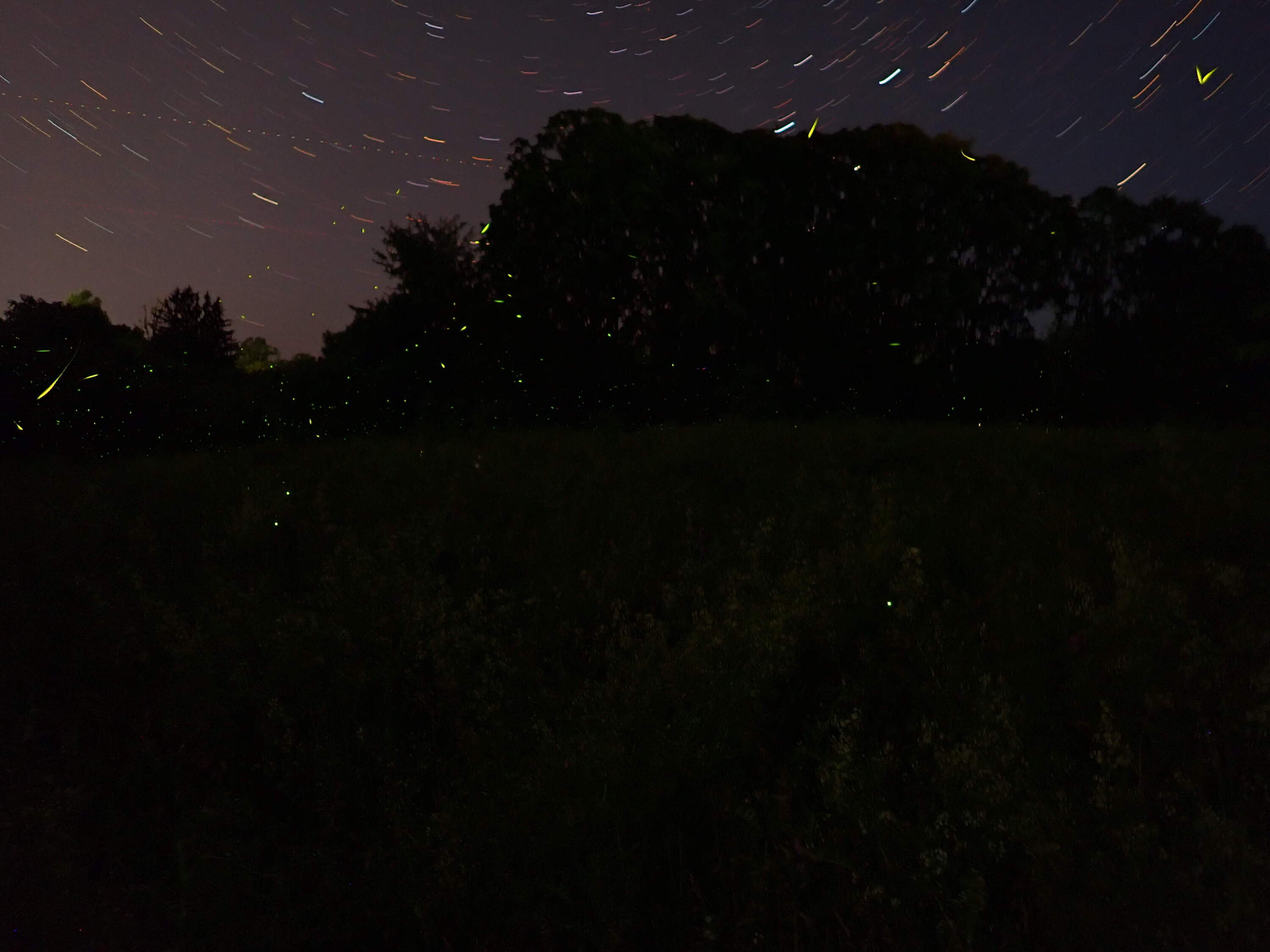Advertisement
The Weekender: Boston's Saturday Morning Newsletter
Want to spot fireflies this summer in Massachusetts? Here’s when and where to find them
Resume
Editor's Note: This is an excerpt from WBUR's Saturday morning newsletter, The Weekender. If you like what you read and want it in your inbox, sign up here.
If you see flashes of light in the trees during your next summer night nature walk, you’re in luck. It means you’ve successfully spotted fireflies.
Fireflies are active in Massachusetts from Memorial Day into late July. And spotting these magnificent beetles — yes, they’re actually beetles — is a special experience. (Why else would that guy from Owl City sing a whole song about it?) The good news is you don’t have to travel far to see them, according to Richard Joyce, an Amherst-based conservation biologist for the Xerces Society.
As a researcher, Joyce’s work mainly focuses on fireflies (talk about a cool gig). He shared with us his expert tips on where to watch and how to safely approach them this summer in Massachusetts.

Where and when to find fireflies
Around Boston, it can be challenging to find a clear space to watch fireflies, since many green spaces and nature reservations close at dusk. But there are ways to get around that, even in the city.
“Bike paths can be a good place to see fireflies, if they go through more dark areas,” Joyce told me. “And any place where you can spend the night, whether it’s a state park or a national park that has fields and forests, those are going to be great places to see fireflies.”
Outside of Boston, travel website Only In Your State suggests Nickerson State Park in Brewster and the meadows along the Cape Cod National Seashore as spots to start your search. Plus, Mass Audubon has a few firefly spotting and hiking events in southeastern and western Massachusetts planned this summer.
When it comes to timing, mid-June through mid-July is “prime,” according to Joyce. (There are also winter fireflies that emerge in February that tuck themselves into tree bark.)
What to look for
New England is home to several different kinds of fireflies. When they emerge, the color of their light and how often they flash can vary depending on species and even the weather.
“If you go out and look up into the treetop, you’ll see the earliest flashing firefly species, the spring treetop flasher,” Joyce said.
This species emits a noticeably orange light, but its subtle glow and high-up location can make it easy to miss, so he suggests watching carefully. Later in the season, Joyce adds that you might see another species, called the green firefly, around in the Connecticut River Valley and many of Boston’s suburbs. You’ll know them because they flash twice around dusk, Joyce said.
When trying to identify the species, Joyce recommends counting how often the firefly flashes over the course of nine seconds. Keep track of the time gaps between each flash. “It might be something like, ‘Oh I’m seeing orange single flashes every three seconds,’ ” he said. Then, you can use this handy graphic from Mass Audubon to help you correspond the flash pattern with a species. Joyce also suggests paying attention to the temperature: “If you think of firefly flashes as music, the temperature is going to set the tempo,” said Joyce. “So, on a cold night, you might have a sort of very leisurely pace to the firefly flash pattern, and on a really hot night, it’s gonna be a lot faster.”
Advertisement
While you’re jotting down your observations, feel free to report what you see to the Xerces Society’s Firefly Atlas, a citizen science project coordinated by Joyce.
How to safely observe fireflies
In general, Joyce doesn’t recommend catching fireflies in a jar. But if you really want to, there are several ways to make the experience safer for our bright little friends.
“One, let them go the same night,” Joyce said. Spending a night indoors might cause the firefly to overheat or dry out from air conditioning.
When you keep a firefly in a jar overnight, the insect also misses out on a key part of its life cycle, Joyce said. Since their adulthood only lasts for those early summer weeks, a firefly’s sole mission during that time is to mate. “[Don’t] deprive them of the opportunity to reproduce that night,” Joyce added.
It’s also a common misconception that you need to poke holes in the jar after catching a firefly. “You don’t really have to worry about them not being able to breathe,” said Joyce. “It’s actually more important that there be a little bit of moisture in the jar or container.” He suggests putting an apple slice in the container, along with a little bit of vegetation and a dampened paper towel. “That’ll keep them happier.”
But ultimately, the fireflies — and you — may be happiest just sitting back and letting them be.
“There are many different ways to approach this,” said Joyce. “But if you want to sit in a lawn chair and observe them, that’s a perfectly valid way to watch firefly flashes.”
P.S. — Before you brave the forest, make sure you’re protecting yourself against ticks. This guide from Radio Boston has what you need to know about these pesky insects and the Lyme disease they carry.
This segment aired on June 7, 2024.
